The Red Deer’s roar – following the autumn rut
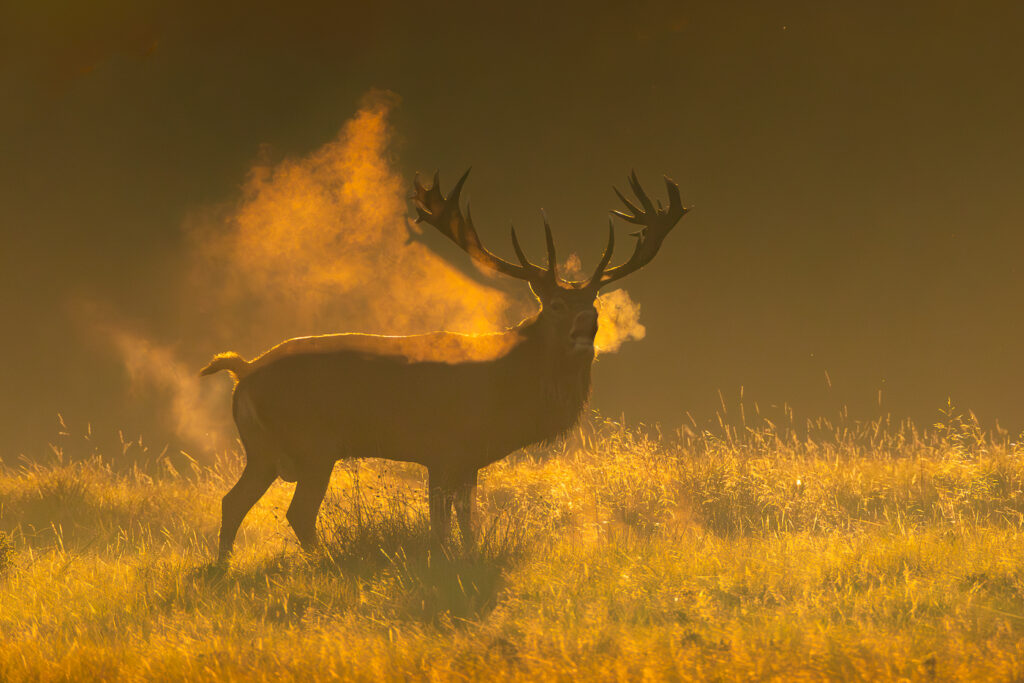
Autumn is one of my favourite times of year to photograph, as temperatures start to drop, the sun sits lower and the colours turn.
The annual Red Deer rut is undoubtedly one of the British Isles’ most spectacular nature events.
I am very fortunate to live close to Richmond Park National Nature reserve, which is, for me, one of the best and most accessible places to watch the drama unfold and photograph this remarkable mating behaviour.
As the rut begins, dominant stags start to establish their territories, roaring across the open landscape to attract hinds and warn off rival males.
This year I was particularly lucky to photograph this behaviour in early autumnal mist. With climate change leading to warmer autumns, misty mornings like this are becoming increasingly rarer, so I made sure to make the most of the opportunity.
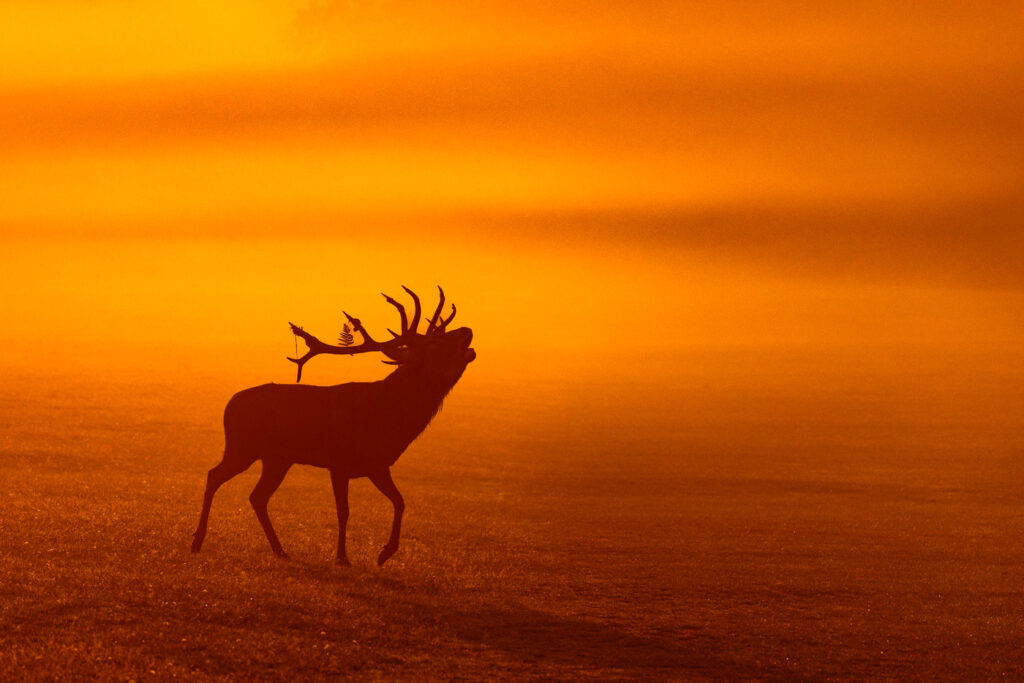
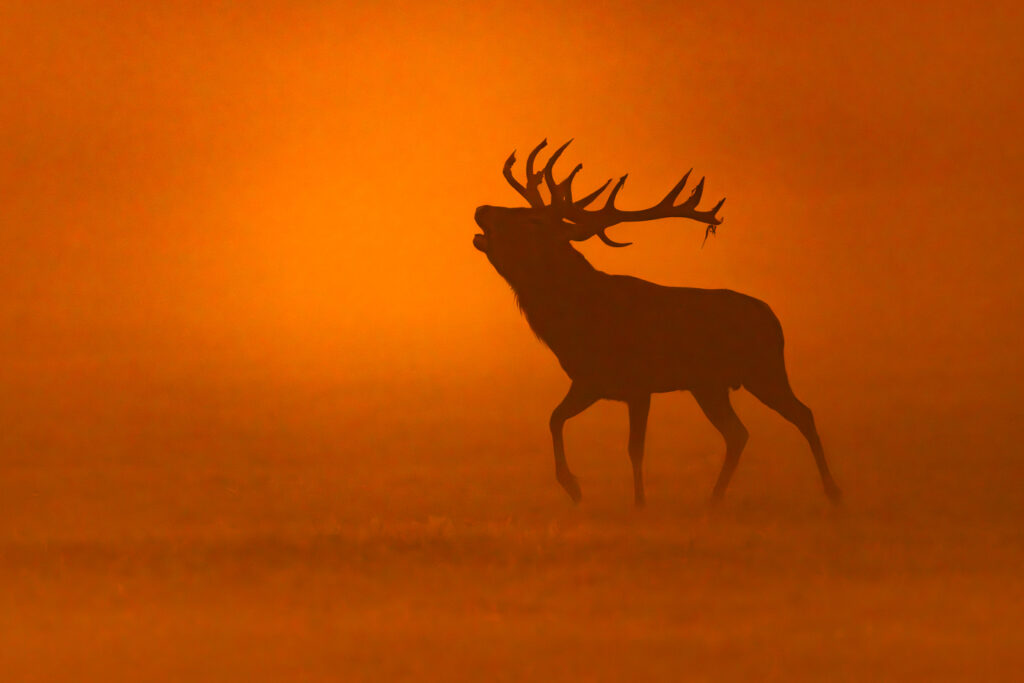
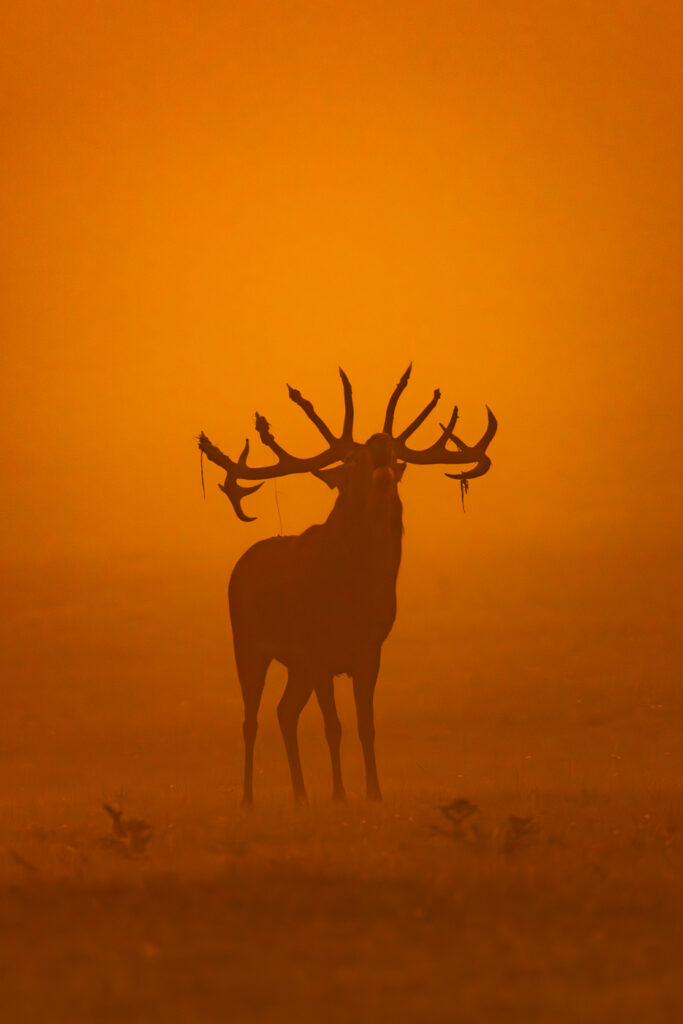
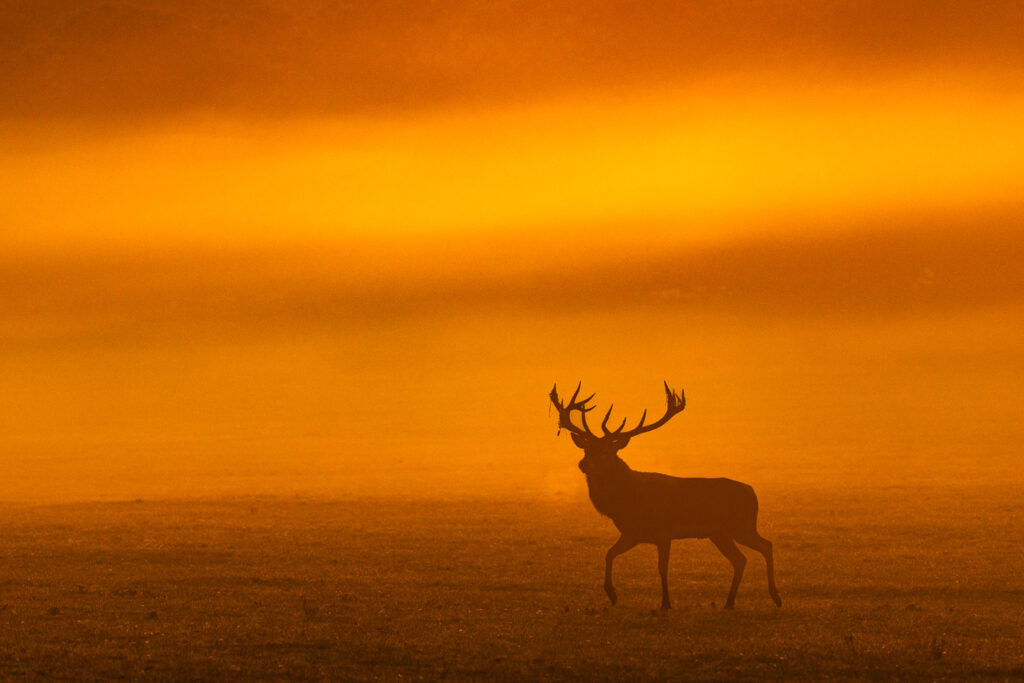
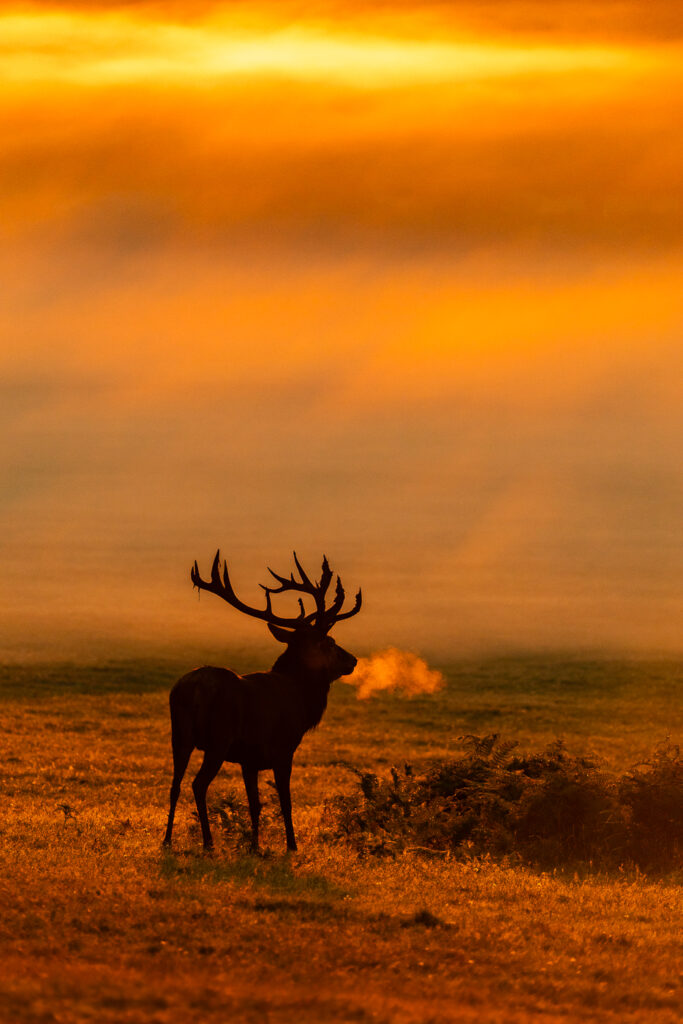
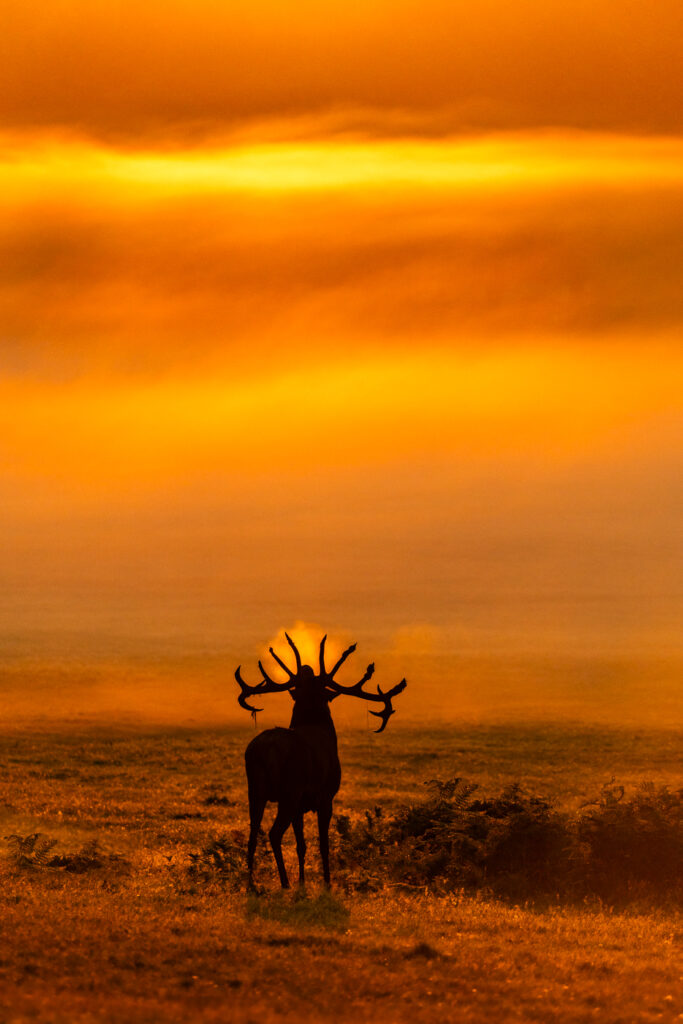
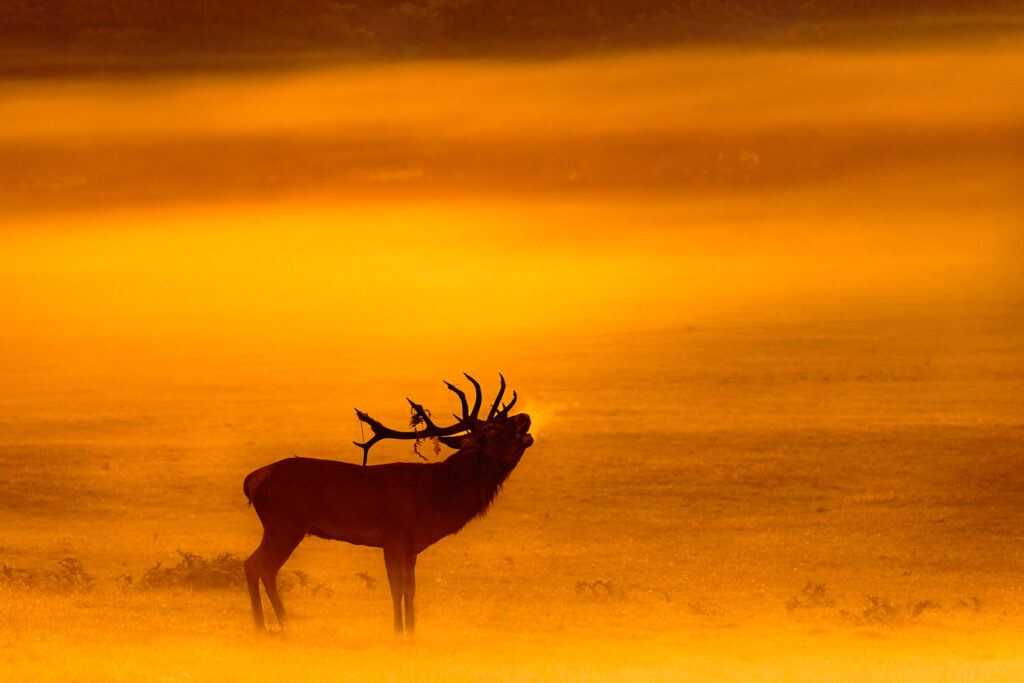

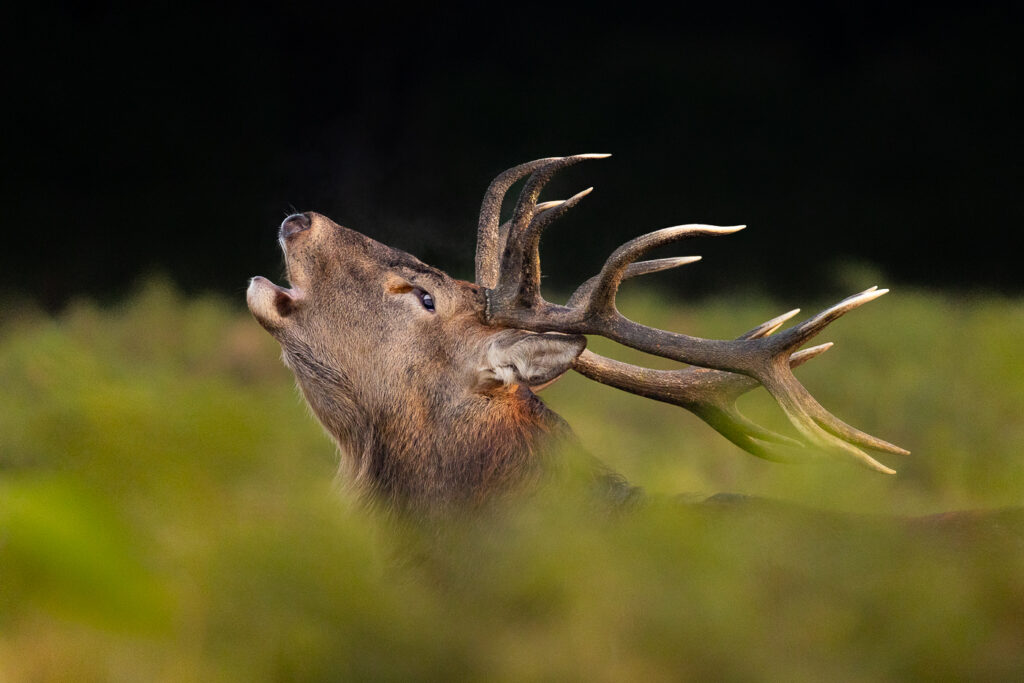
As rutting activity intensifies, vocalisations become more frequent. Red stags produce deep, resonant roars.
As testosterone levels rise, stags also engage in antler rubbing, a behaviour that serves multiple purposes beyond sharpening. This behaviour is also a complex form of communication and preparation for mating.

By rubbing their heads against trees, stags deposit a unique scent from glands on their foreheads. This leaves an olfactory “calling card” for other deer in the area, communicating the stag’s identity, health, and social status. It also helps attract potential mates.
The physical exertion of rubbing against trees also helps a male deer build strength in its neck and shoulders, preparing it for the intense physical combat that may be necessary to win access to females.

Males may also wallow in mud and their own urine. The urine helps bring females into oestrus and the mud can give them a more imposing, darker appearance.
Deer have scent glands on their legs and feet that secrete a pungent scent. By urinating, splashing and rolling in the mud, a stag covers its entire body in a musky odour. This scent advertises its age, sex, and breeding readiness to hinds. A stag covered in dark, muddy filth appears larger and more intimidating to rival males. The combination of the strong odour and dark coloration is a clear signal of the stag’s dominant status, allowing it to assert itself and deter rival males, without matters escalating into a fight which risks injury and death.
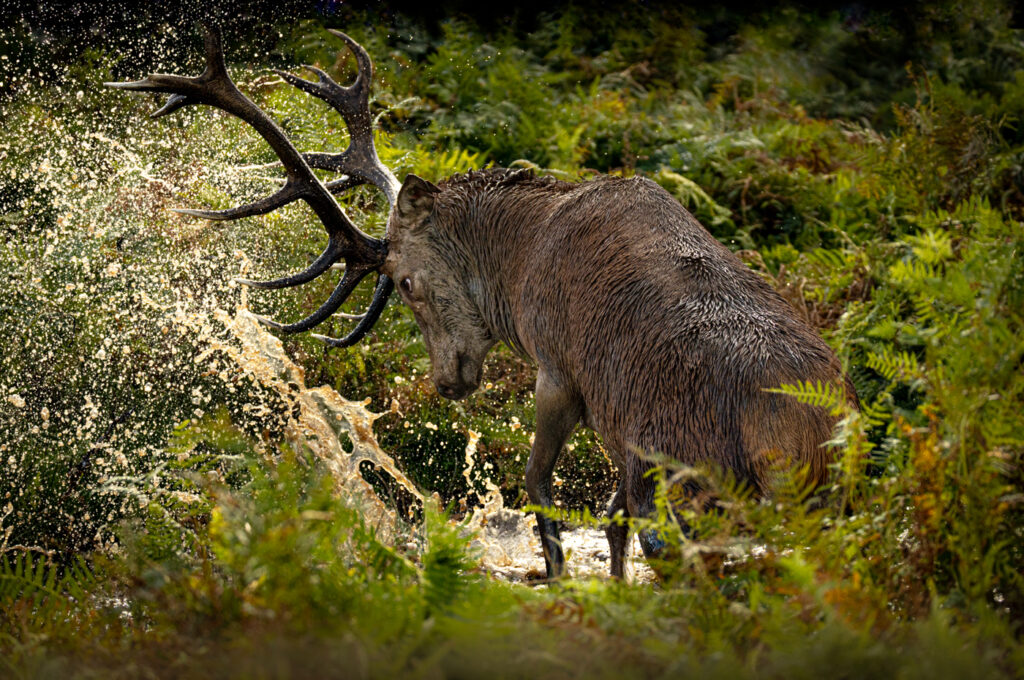
As the rut progresses, dominant Red Deer stags herd hinds together into harems. They chase the females around using the scent detectors in their tongues to find out if they are receptive and ready to mate.

The flehmen response is also a key part of Red Deer courtship behaviour.
The stag curls back its upper lip to analyse scents from receptive females. This behaviour allows the deer to draw air towards the vomeronasal organ, or Jacobson’s organ, located on the roof of its mouth. The organ is specialised to detect pheromones and other chemical signals that indicate a female is ready to mate.

Alongside these behaviours, stags engage in visual displays such as antler thrashing, emerging with a crown of bracken adorning their antlers making them look bigger and more intimidating to rival males.

I love taking my son out with me to photograph during the rut, teaching him about this highlight of nature’s calendar. The image below of a muddy stag roaring against a tapestry of autumn colours is one of his and was awarded in his School’s Photography competition for which I’m very proud.

This year I spent a lot of time photographing stags against dark backdrops.
This low-key approach, isolating the subject, draws focus to the details of the deer such as fur and antlers.
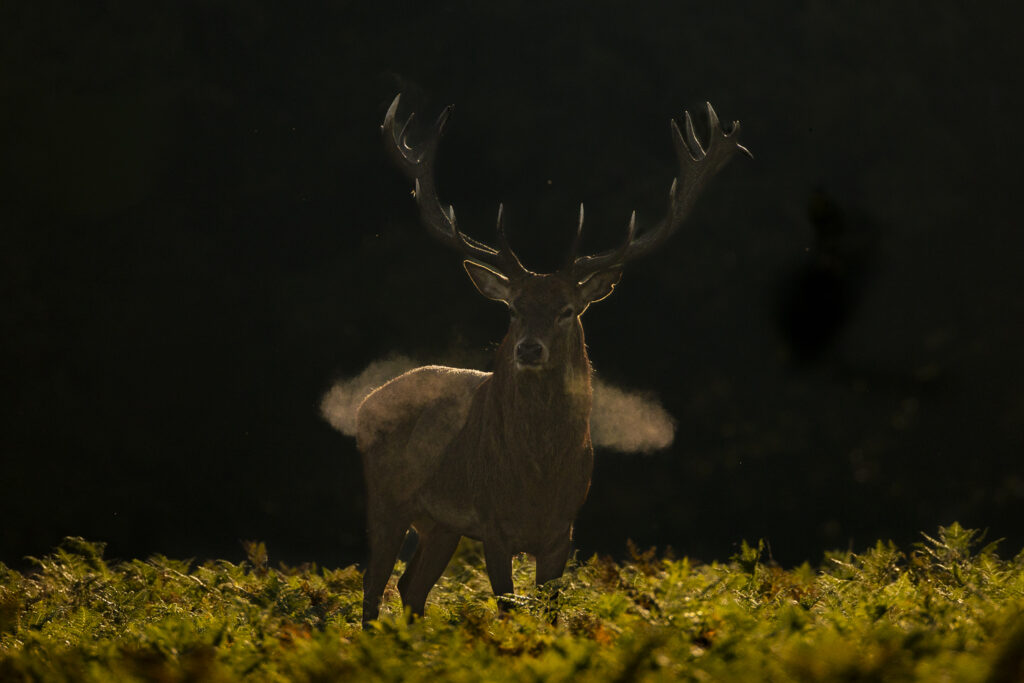
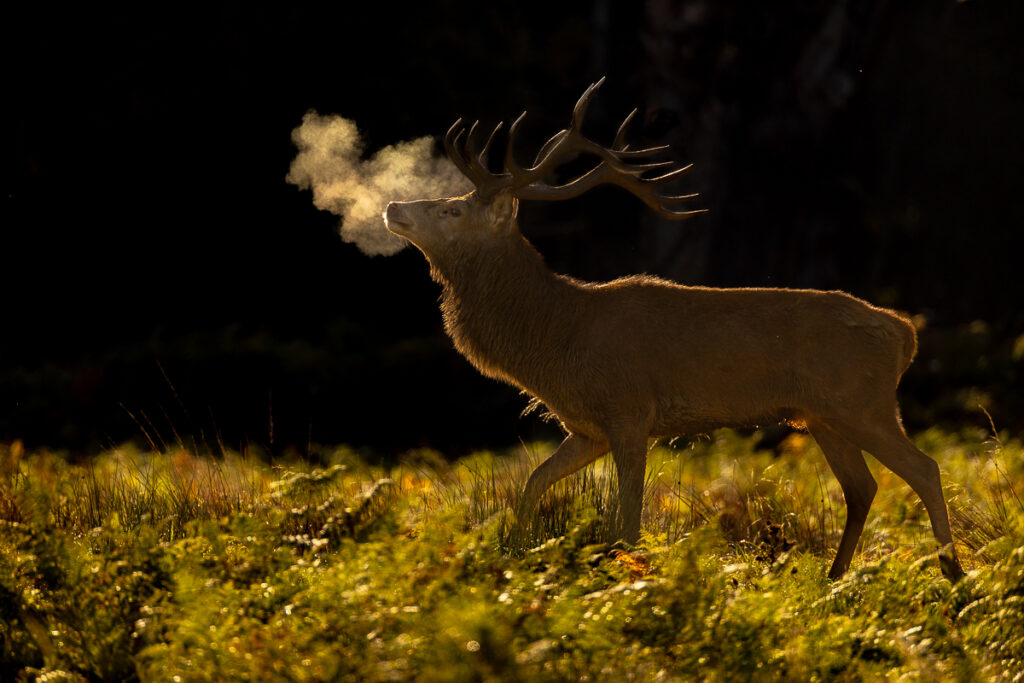
This last sequence was perhaps the highlight of the rut for me this year, capturing this dominant stag at the edge of a wooded area. I deliberately underexposed the image by a couple of stops so the early morning raking side light created a mood of menace.

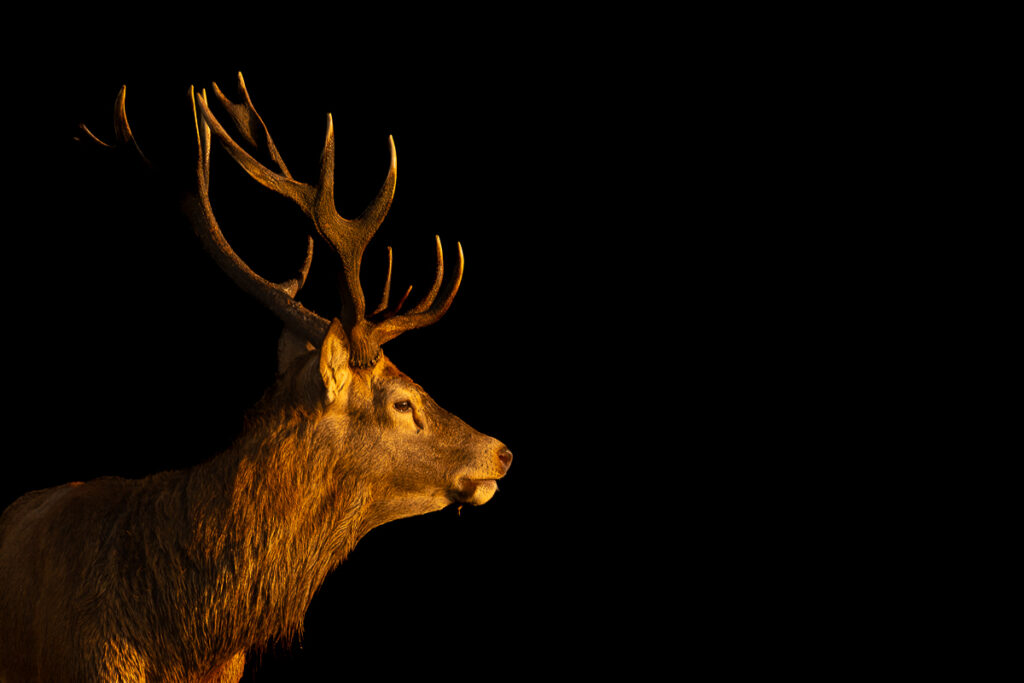

I’ve been photographing the Red Deer rut now for over 16 years. You can see the highlights in my gallery, part of my Wild Britain portfolio. I’ve still got a few more images I want to capture to complete the story. These will have to wait now as the rutting stands have fallen silent for another year. Be sure though, I’ll be back next year, answering the magnificent roar of the Red Deer.
